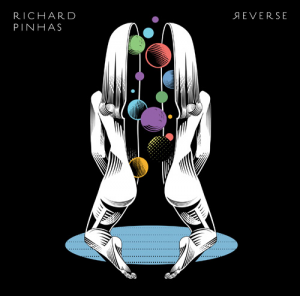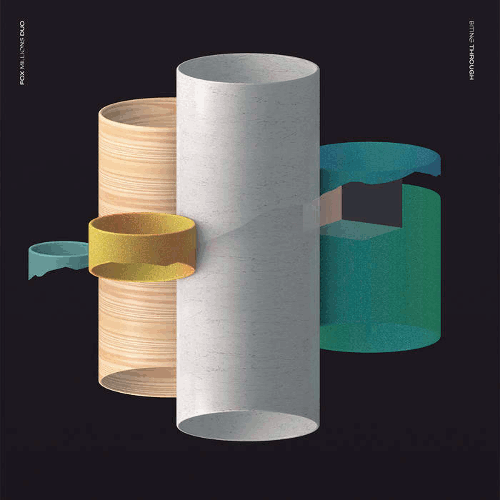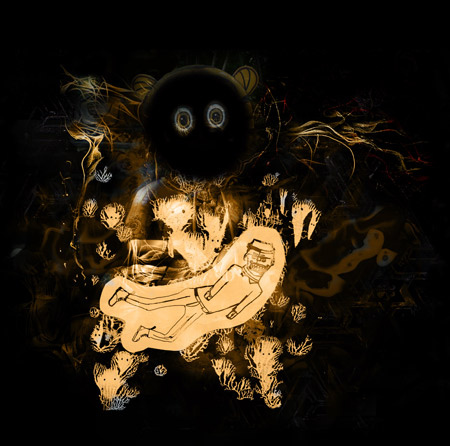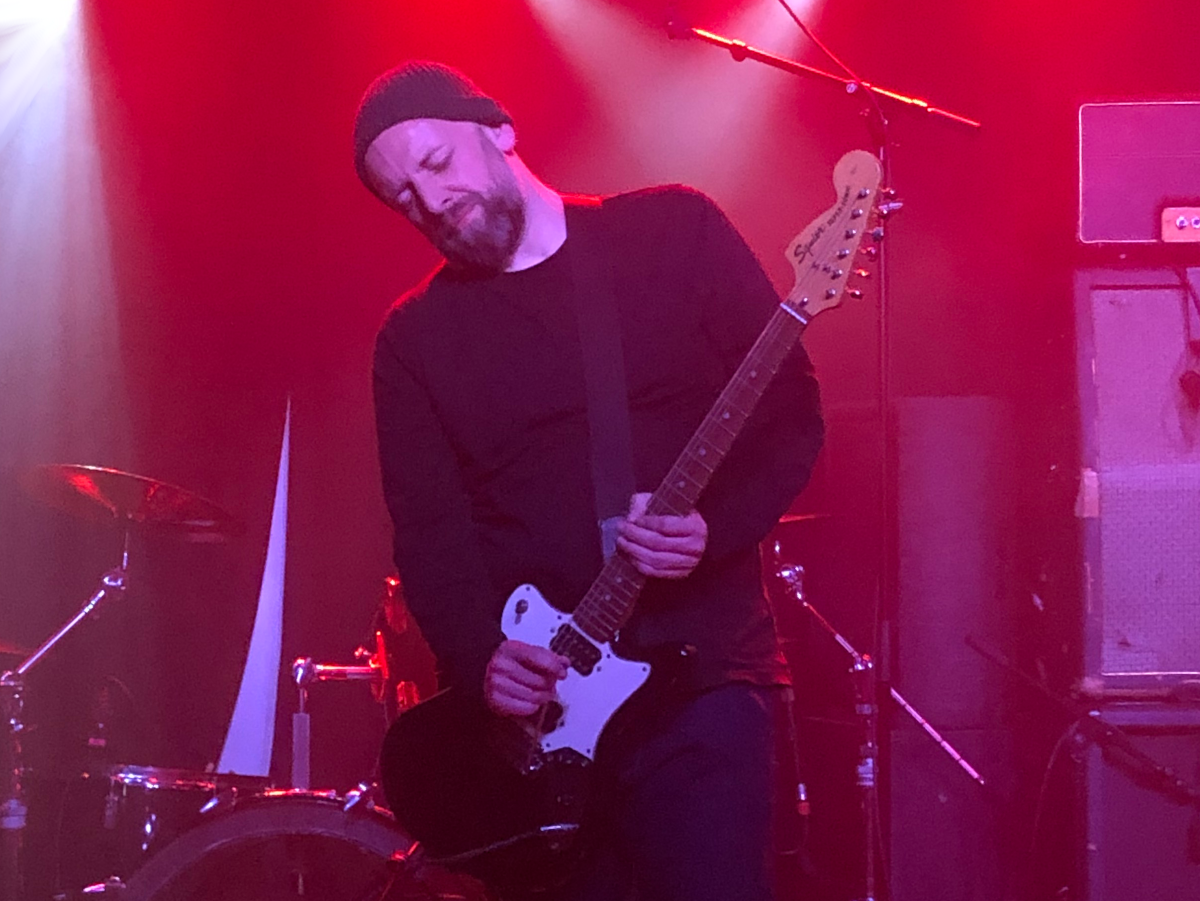 “Allons enfants de la Patrie, le jour de gloire est arrivé.” When the musical “Marseillaise” is sung, there can surely be no more fitting embodiment of Gallic savoir faire than Richard Pinhas. Philosopher, guitarist, innovator, electronic music pioneer – his visage is perfectly placed to flutter aloft on the bloody banners raised above the barricades. For those au fait with the demi-monde of French avant rock, Christian Vander has seemingly always had more cachet, yet for my rosbif Pound Sterling, it is Pinhas who has the superior canon.
“Allons enfants de la Patrie, le jour de gloire est arrivé.” When the musical “Marseillaise” is sung, there can surely be no more fitting embodiment of Gallic savoir faire than Richard Pinhas. Philosopher, guitarist, innovator, electronic music pioneer – his visage is perfectly placed to flutter aloft on the bloody banners raised above the barricades. For those au fait with the demi-monde of French avant rock, Christian Vander has seemingly always had more cachet, yet for my rosbif Pound Sterling, it is Pinhas who has the superior canon.
Following the demise of Heldon, although Pinhas worked constantly either on his own music, or as a synthesiser-based session man on that of others, as the Eighties wore on, the spreading malaise that Pinhas felt was creeping into music saw him take a position of radical opposition, erecting an iron cordon sanitaire and withdrawing from the music industry completely:
…I stopped making music altogether in 82/83. I felt I didn’t have much to say. This lasted six or seven years. Instead I went to the French Alps six months a year to parachute, paraglide, and read philosophy. At this time, it seemed music was in a depression. Eno didn’t make anything very important then. Kraftwerk didn’t make anything important in the ’80s.
Despite being some distance removed from the territory in which Pinhas had traditionally operated, it is Nirvana whom he credits with re-energising both music in general and his interest around making it in particular:And then came Nirvana. Wow! And they freed the music. For real, I don’t joke. Nirvana was a really important thing. Then I came back to music. That was a miracle. Because normally when you stop, you’re out. Out of the music, out of the market. It was a new revolution. When I came back I went directly to digital, and learned digital recording in Sound Designer. Pro Tools didn’t exist yet. So, I learned everything.
Although hors de combat for the best part of a decade, Pinhas put his newly-acquired learning to immediate use, and some two decades later, he is busier than ever, touring (autumn 2016 saw him complete a successful tour of America with sold-out shows in New York, Houston and Austin), collaborating with the likes of Wolf Eyes and Masami Akita (otherwise known to the world by his chosen sobriquet Merzbow), and releasing a steady flow of low-key tours de force.
The latest of these, Reverse, sees Pinhas embarking upon a lengthy and highly personal instrumental entitled “Dronz”, made in the wake of a troubled personal annus horriblis in which his parents died, his long-term relationship went up in flames and he even found himself temporarily homeless. The shadowy, dense textures of the music represent something of a musical exorcism of the evil hoodoo that precipitated it. Pinhas even contemplated an original title of @Last – signposting it as his final album – and so its revised title, therefore, signifies a subtle double entendre that is not immediately apparent. As Pinhas has put it recently: “It was a healing process for me to make this album. To get rid of all the negativity that occupied my brain. But that is all behind me now.”Constructed from an armature created by Pinhas and Oren Ambarchi, additional parts were subsequently layered in after an exhaustive search for the right contributors, one which eventually included Akita, Pinhas’s son Duncan and the outstanding American percussionist William Winant (perhaps best known to ‘rock’ audiences for his contribution to Sonic Youth’s monumental Goodbye 20th Century).
Divided out across four separate movements – “Ketter”, “End”, “Nefesh” and “V2” – the pieces fizz audibly with musical joie de vivre, Pinhas delivering a masterful blend of archaeology of his own musical past, modern digital possibilities du jour and sly Kabbalistic subtext. The end result feels like Pinhas in the rôle of learned, old mekubbal assembling the disjecta membra of his past in the service of creating something new, something shot through with the feeling of philosophical questing and spiritual renewal perhaps appropriate to an older self. The highlight of the album is, perhaps, the third movement, “Nefesh”. Erupting in a primordial soup of analogue synth whose chemical constituents are immediately recognisable as containing strong trace elements of Heldon, Arthur Narcy’s insistent drumming propels us relentlessly forward through the cosmic soundspace. The epic “V2”, with its understated nods towards both Thomas Pynchon and David Bowie (RIP)2, provides the denouement to the album, one which has been described as “music sounding like the aftermath of an enormous futuristic electrical malfunction still lingering over a vast cityscape.”Overall, Reverse is a deep, dark pool in which to swim; and the further out one ventures, imperceptibly, the deeper the waters become. It is an album that is slow to reveal its full expanse, but each listen discloses new swirls and eddies and provides the ear with things that may have been missed on previous excursions into its liquid environment. Not only has Pinhas managed to rid himself of some personal demons, he has – in the best alchemical tradition – moved from nigredo, reconciling opposites, taming the volatility of his components, and created rubedo, a successful and spiritually meaningful end to his great work.
And that can only be a good thing, n’est-ce pas?
-David Solomons-
1 Pinhas’ dissertation was charmingly entitled Science-Fiction, Inconscient et Autres Machins, and concerned itself with the intersections of time, time manipulation, science fiction and analogue electronic music. Sacré bleu!
2 Pynchon’s mammoth work Gravity’s Rainbow features the proto-Apollo Vergeltungswaffe Zwei (V2) rocket as its McGuffin, the black and white monster also receiving a name-check in Bowie’s tip o’ the cap to Kraftwerk’s Florian Schneider, “V-2 Schneider”. Contrary to widely circulated opinion, Bowie was not off his nut on coke and making darkly-veiled allusions to the Nazis; V2 was Schneider’s band nickname, his colleague Ralf Hütter being known as The Doktor.



